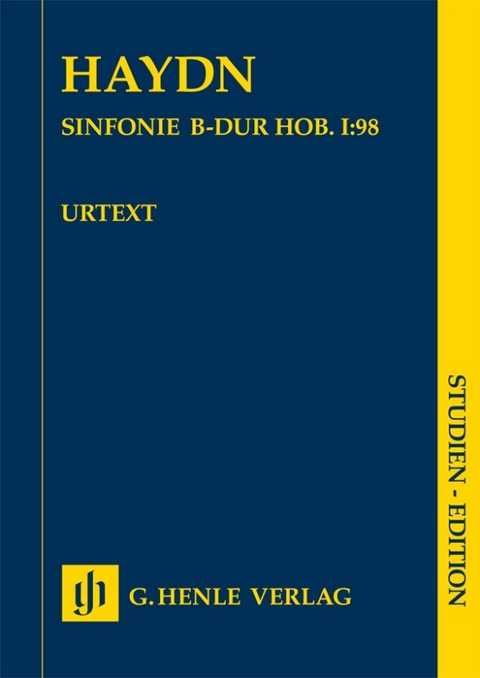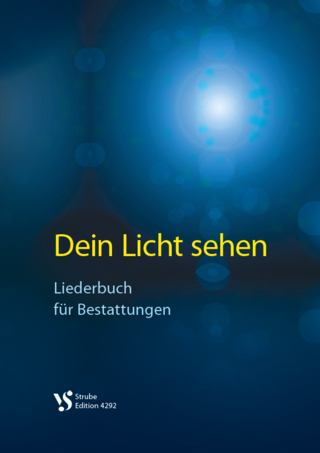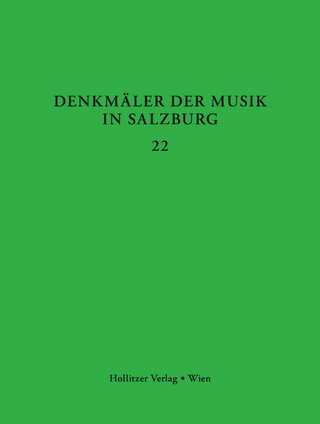
Joseph Haydn - Sinfonie B-dur Hob. I:98 (Londoner Sinfonie)
Besetzung: Orchester
Seiten
2020
Henle, Günter (Verlag)
979-0-2018-9066-1 (ISMN)
Henle, Günter (Verlag)
979-0-2018-9066-1 (ISMN)
- Titel nicht im Sortiment
- Artikel merken
Orchestermaterial beim Bärenreiter-Verlag
The twelve “London Symphonies” comprise the sublime final statement of Haydn’s symphonic œuvre. They were written for the London impresario Johann Peter Salomon, and Haydn himself conducted their premieres during his lengthy stays in the English metropolis in 1791/92 and 1794/95. The first performance of the B-flat-major Symphony no. 98 in 1792 was so successful that the two allegro outer movements even had to be repeated. Haydn led the performance - as was customary - from a keyboard instrument, with which he discreetly supported the orchestra. In the finale of this symphony, however, the composer had planned an uncustomary little solo with arpeggiated chords for himself, which assuredly did not fail to impress the audience.This study edition adopts the musical text of the Haydn Complete Edition, thereby guaranteeing the highest scholarly quality. An informative preface and a brief Critical Report make the handy score an ideal companion for all current and soon-to-be Haydn fans. Les douze «Symphonies londoniennes» forment le sublime accord final de l’œuvre symphonique de Haydn. Elles ont été conçues pour l’imprésario londonien Johann Peter Salomon, et Haydn lui-même en dirigea les créations, lorsqu’il se rendit, en 1791/1792 et 1794/1795, pour quelque temps dans la métropole anglaise. La première audition de la Symphonie en Si bémol majeur n° 98, en 1792, fut couronnée d’un tel succès que les premier et dernier mouvements, allegro, durent même être bissés. Haydn était au pupitre de cette exécution - comme c’était alors l’usage - depuis son clavier, avec lequel il soutenait convenablement l’orchestre. Dans le Finale de cette symphonie, le compositeur se réserva, exceptionnellement, l’occasion d’un petit solo personnel d’accords arpégés, qui ne manqua pas de produire son effet sur le public.L’Édition d’étude reprend le texte musical de l’Édition intégrale des œuvres de Haydn et garantit ainsi la plus haute qualité scientifique de publication. Une préface informative et un bref commentaire critique font de cette partition maniable l’accompagnateur idéal de tous les fans de Haydn, comme de ceux qui souhaitent le devenir. Die zwölf „Londoner Sinfonien“ bilden den erhabenen Schlussakkord in Haydns symphonischem Œuvre. Sie entstanden für den Londoner Impresario Johann Peter Salomon und Haydn selbst dirigierte die Erstaufführungen, als er sich 1791/92 und 1794/95 für längere Zeit in der englischen Metropole aufhielt. Die Erstaufführung der B-dur-Sinfonie Nr. 98 war 1792 so erfolgreich, dass die beiden Allegro-Ecksätze sogar wiederholt werden mussten. Haydn leitete die Aufführung - wie damals üblich - von einem Tasteninstrument aus, mit dem er das Orchester dezent unterstützte. Im Finale dieser Sinfonie sah der Komponist aber ausnahmsweise ein kleines Solo mit arpeggierten Akkorden für sich persönlich vor, das seinen Effekt beim Publikum sicher nicht verfehlte.Die Studien-Edition übernimmt den Notentext der Haydn-Gesamtausgabe und bürgt somit für höchste wissenschaftliche Qualität. Ein informatives Vorwort und ein kurzer Kritischer Bericht machen die handliche Partitur zum idealen Begleiter für alle Haydn-Fans und solche, die es werden wollen.
The twelve “London Symphonies” comprise the sublime final statement of Haydn’s symphonic œuvre. They were written for the London impresario Johann Peter Salomon, and Haydn himself conducted their premieres during his lengthy stays in the English metropolis in 1791/92 and 1794/95. The first performance of the B-flat-major Symphony no. 98 in 1792 was so successful that the two allegro outer movements even had to be repeated. Haydn led the performance - as was customary - from a keyboard instrument, with which he discreetly supported the orchestra. In the finale of this symphony, however, the composer had planned an uncustomary little solo with arpeggiated chords for himself, which assuredly did not fail to impress the audience.This study edition adopts the musical text of the Haydn Complete Edition, thereby guaranteeing the highest scholarly quality. An informative preface and a brief Critical Report make the handy score an ideal companion for all current and soon-to-be Haydn fans. Les douze «Symphonies londoniennes» forment le sublime accord final de l’œuvre symphonique de Haydn. Elles ont été conçues pour l’imprésario londonien Johann Peter Salomon, et Haydn lui-même en dirigea les créations, lorsqu’il se rendit, en 1791/1792 et 1794/1795, pour quelque temps dans la métropole anglaise. La première audition de la Symphonie en Si bémol majeur n° 98, en 1792, fut couronnée d’un tel succès que les premier et dernier mouvements, allegro, durent même être bissés. Haydn était au pupitre de cette exécution - comme c’était alors l’usage - depuis son clavier, avec lequel il soutenait convenablement l’orchestre. Dans le Finale de cette symphonie, le compositeur se réserva, exceptionnellement, l’occasion d’un petit solo personnel d’accords arpégés, qui ne manqua pas de produire son effet sur le public.L’Édition d’étude reprend le texte musical de l’Édition intégrale des œuvres de Haydn et garantit ainsi la plus haute qualité scientifique de publication. Une préface informative et un bref commentaire critique font de cette partition maniable l’accompagnateur idéal de tous les fans de Haydn, comme de ceux qui souhaitent le devenir. Die zwölf „Londoner Sinfonien“ bilden den erhabenen Schlussakkord in Haydns symphonischem Œuvre. Sie entstanden für den Londoner Impresario Johann Peter Salomon und Haydn selbst dirigierte die Erstaufführungen, als er sich 1791/92 und 1794/95 für längere Zeit in der englischen Metropole aufhielt. Die Erstaufführung der B-dur-Sinfonie Nr. 98 war 1792 so erfolgreich, dass die beiden Allegro-Ecksätze sogar wiederholt werden mussten. Haydn leitete die Aufführung - wie damals üblich - von einem Tasteninstrument aus, mit dem er das Orchester dezent unterstützte. Im Finale dieser Sinfonie sah der Komponist aber ausnahmsweise ein kleines Solo mit arpeggierten Akkorden für sich persönlich vor, das seinen Effekt beim Publikum sicher nicht verfehlte.Die Studien-Edition übernimmt den Notentext der Haydn-Gesamtausgabe und bürgt somit für höchste wissenschaftliche Qualität. Ein informatives Vorwort und ein kurzer Kritischer Bericht machen die handliche Partitur zum idealen Begleiter für alle Haydn-Fans und solche, die es werden wollen.
Sinfonie B-dur Hob. I:98
| Erscheinungsdatum | 15.04.2022 |
|---|---|
| Reihe/Serie | Studien-Editionen |
| Vorwort | Friederike Mühle |
| Zusatzinfo | ?Orchestermaterial beim Bärenreiter-Verlag |
| Verlagsort | München |
| Sprache | englisch; französisch; deutsch |
| Maße | 170 x 240 mm |
| Gewicht | 176 g |
| Themenwelt | Kunst / Musik / Theater ► Musik ► Musikalien |
| Kunst / Musik / Theater ► Musik ► Musikgeschichte | |
| Schlagworte | henle • Klassik • Musik • Musikalien • Noten • Urtext |
| Zustand | Neuware |
| Informationen gemäß Produktsicherheitsverordnung (GPSR) | |
| Haben Sie eine Frage zum Produkt? |
Mehr entdecken
aus dem Bereich
aus dem Bereich
San Giovanni Nepomuceno, Oratorio Melodrammatico Sacro
Buch | Hardcover (2024)
Hollitzer Wissenschaftsverlag
68,00 €
Buch | Softcover (2020)
Bosworth Edition - Hal Leonard Europe GmbH (Verlag)
17,99 €


